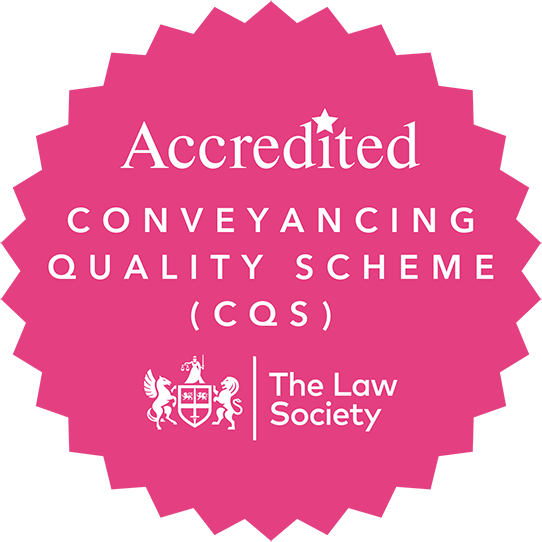A Guide to… What is Collaborative Law?
When a couple decides to end a marriage, it doesn’t have to be acrimonious. Collaborative Law is the process which offers a fair and dignified end to the marriage which can also reduce emotional distress, enabling the couple to move on with their lives.
Importantly if the couple also have children together it provides a mutually agreed framework for resolving issues which will help to minimise the impact on the children and allow more successful co-parenting in
the future.
Collaborative Law covers the key issues of finances and child contact arrangements along with other issues such as the ownership of pets, division of personal belongings etc which are equally important to many people.
The key difference with a Collaborative Law approach to divorce is that the settlement is reached in a non-confrontational manner aiming to help the couple formalise the end of their marriage on their own terms. Each party appoints a Collaborative Law trained solicitor who work together with the couple across several face-to-face meetings, to help them reach an agreement which is then presented to the court.
There are several other benefits to using the Collaborative Law approach but for many couples, the key benefit is that they retain control of the process without it being lost to the decision making of the court. Also, they can work to their own timetable and work things out at their own pace. At a time when the courts are struggling to deal with their workload, potentially leading to months of delays, the Collaborative approach can bring matters to a conclusion much more quickly whilst enabling the parties to minimise conflict
and stress.
Collaborative Law is less likely to work in situations where there may be a history of coercive behaviour or domestic abuse, or if one of the parties has already appointed a non-collaborative lawyer and they are unwilling to change.
How does Collaborative Law work?
Before the process begins, both parties and their solicitor will formally agree to follow the Collaborative Law process and to stick to it. The Collaborative Law model sets out how the couple will work together and what they will avoid. For example, it avoids:
• Bad faith and dwelling on the past
• Putting the other person down and risking the future relationship
• Being dishonest
• Criticism or sarcasm
• Interrupting and speaking for the other person
• Making threats and issuing ultimatums
• Fixating on one issue rather than looking at the whole picture
• Failing to speak up or play an active role if it isn’t working out
• Making key decisions outside of the joint meetings
• Relying on other professionals for support outside of the process without disclosure
There is no limit to the number of meetings which can be had, but if the above points are avoided then it should be possible to conclude matters swiftly.
The role of the Collaborative Law solicitor
Each party has their own solicitor, and they will work with their client to prepare for the meetings ahead and discuss what has been agreed. Advice and support is offered in the forum of the meetings, so that there is complete openness and transparency throughout. Once settlement is reached, the solicitors will jointly draft the documentation to be presented to the court, which shows how the decisions were arrived at and that both parties were fully informed and understand the process and concluding the financial aspect of the marriage.
Latest figures show that the Collaborative Law process which has been used since 2003 results in a successful resolution in nine out of ten cases, so it is very effective.
Sounds great, sign me up…
If the Collaborative Law process sounds like one you would like to use, then you both need to appoint a Collaborative Lawyer. They will meet with you individually to talk about the process before a meeting with all four parties takes place.
You can also choose whether to appoint other professionals to the collaborative team – such as a financial advisor, accountant or depending on the needs of your child, a child specialist or family consultant.
The solicitors will then meet or speak to agree an agenda and the plan for the first meeting with all four parties.
At the first meeting of all four parties, your solicitor will make sure that you understand what is being discussed and then all four parties will sign a contract to confirm how the process will continue. Both parties will be invited to provide an anchor statement, setting out why they have chosen the Collaborative process which can serve as a reminder when difficult discussions take place.
Depending on your personal circumstances, the agenda will then reflect the matters to be discussed and what additional information might need to be provided by each party – such as financial information.
Meetings will continue until each party’s concerns have been dealt with and agreed.
At the final meeting, the document which details your agreement will be signed and your solicitors will then work together to conclude the divorce and ensure the agreement is legally binding.
Timescale
The Collaborative Law process follows a timetable agreed by the parties involved so it can fit around your work and family commitments. On many occasions a former couple may only need two or three meetings to work through issues, but for others it can take a little longer depending on the complexities of say finances and other issues such as the future residency of the child/children if one parent plans to move abroad.
Cost
Your solicitor will provide you with an estimate of how much it will cost at the beginning of the process, which will largely depend on the number of meetings which take place.
To discuss appointing a Collaborative Lawyer to represent you, contact our matrimonial team matrimonial@gullands.com or call us today 01622 689700

 Close Menu
Close Menu




















